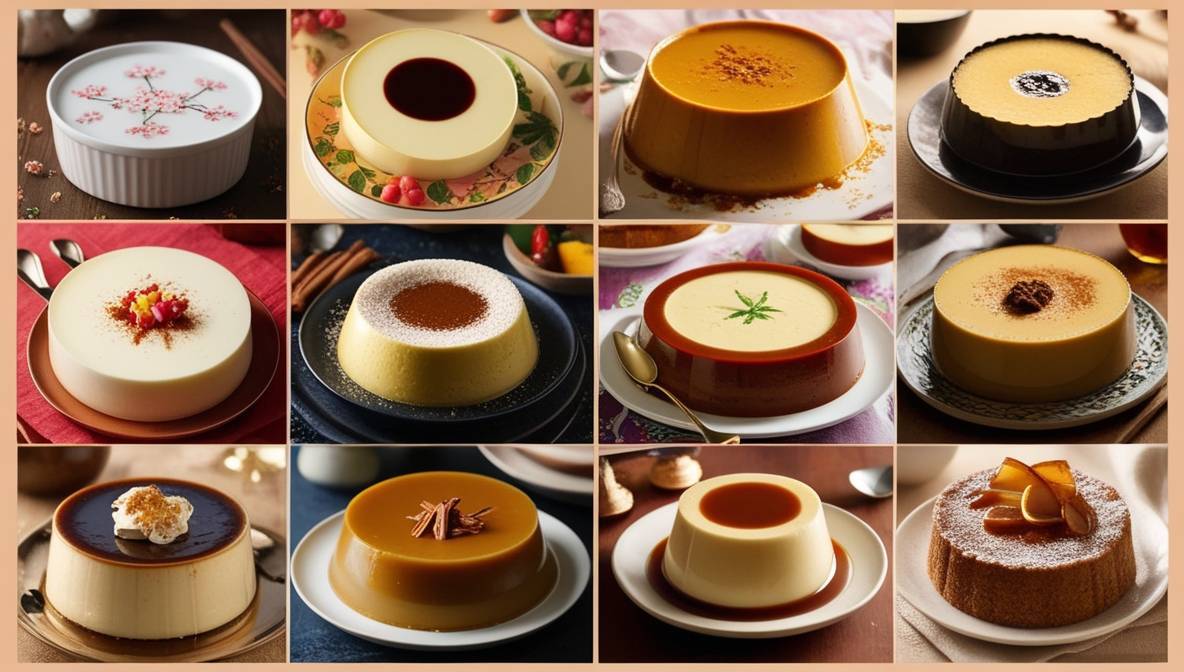

Flan’s journey begins in ancient Rome, where it was first created as a savory dish. Over time, it evolved into the sweet, creamy custard dessert we know today. Flan spread across Europe, eventually making its way to Latin America, where it became a staple dessert. This dessert's journey is a testament to its versatility and universal appeal.
Europe played a pivotal role in transforming flan into the sweet dessert we love today. In Spain, flan took on a new identity, with "caramelized sugar" becoming a hallmark. Spanish flan, known for its simplicity and delicate flavor, laid the foundation for various regional adaptations.
As Spanish colonizers brought flan to Latin America, it became a part of the local culinary traditions. Each country in Latin America added its own twist, giving birth to a variety of flan recipes that reflect the diverse cultures and ingredients of the region.

When discussing "which country has the best flan," Cuba often comes to mind, especially for those who have visited Puerto Sagua in Miami. Cuban flan is renowned for its rich, dense texture and deep caramel flavor. But what makes Cuban flan stand out?
The Secrets Behind Cuban Flan
Cuban flan is distinct due to its use of sweetened condensed milk and a generous amount of eggs, resulting in a creamier and thicker consistency. The caramel layer is often slightly burnt, adding a bittersweet contrast to the sweet custard. Puerto Sagua in Miami serves an exemplary Cuban flan, drawing both locals and tourists eager to experience this iconic dessert.
Mexico is another country that fiercely competes for the title of the best flan. Mexican flan, known as "flan de cajeta," incorporates goat’s milk caramel, giving it a unique flavor profile. The use of goat’s milk caramel, or cajeta, imparts a slightly tangy, rich taste that sets it apart from other versions.
What Makes Mexican Flan Unique?
Mexican flan often includes "cinnamon" and "vanilla", which adds warmth and depth to the dessert. The cajeta layer is thicker and more pronounced, providing a luscious experience with every bite. In Mexico, flan is often served at celebrations, making it more than just a dessert but a part of cultural traditions.
Spain, where flan was refined into a sweet delicacy, holds a special place in the flan world. Spanish flan, or "flan de huevo," is characterized by its simplicity and delicate texture. The focus is on achieving the perfect balance between the egg custard and caramel, without overpowering the flavors.
The Spanish Approach to Flan
In Spain, the emphasis is on the "quality of ingredients," particularly the eggs and milk. The caramel is light, and the custard is silky smooth, creating a melt-in-your-mouth experience. While Spanish flan may seem simple, its elegance lies in its restraint and refinement.
Beyond Cuba and Mexico, other Latin American countries have their own versions of flan, each with distinct characteristics.
In Argentina, flan is often served with a generous portion of "dulce de leche," a sweet milk-based sauce that adds a rich, caramelized flavor. This pairing creates a dessert that’s both creamy and indulgent, with the dulce de leche adding an extra layer of sweetness.
Peruvian flan is known for being lighter and less sweet, often flavored with "vanilla" or "citrus". It’s a more delicate version, focusing on subtle flavors that don’t overpower the palate.
Outside of Latin America, the Philippines has made its mark with "leche flan," a version of flan that’s richer and denser than its Latin American counterparts. Filipino leche flan is typically made with more egg yolks, resulting in a custard that’s both creamy and firm.
The Distinctive Features of Leche Flan
What sets Filipino leche flan apart is the use of "carabao's milk" (water buffalo milk), which contributes to its richness. The caramel layer is also thicker, creating a more robust flavor. Leche flan is a staple at Filipino celebrations, often served with fresh fruits or as a topping for other desserts.

So, "which country has the best flan?" The answer ultimately depends on your personal taste. Whether it’s the dense and rich Cuban flan, the tangy and sweet Mexican flan, the elegant Spanish flan, or the indulgent Filipino leche flan, each offers a unique experience that reflects its cultural roots.
If you ever find yourself in Miami, a visit to Puerto Sagua is a must to taste their famous Cuban flan. But don’t stop there—explore the diverse world of flan and discover your own favorite. After all, the best flan is the one that brings you the most joy.